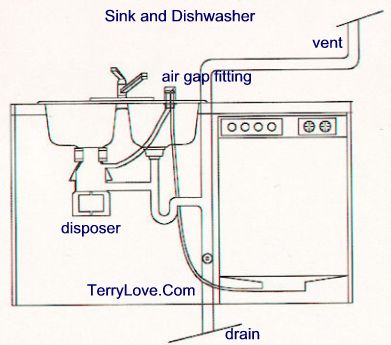Our dishwasher smells, not uncommon. Our dishwasher drainhose connects straight to the garbage disposal. I don't think there is a "loop". But that is to prevent water backup I believe.
We are thinking of connecting the drainhose directly to the sewer line in the basement. We would use PCV piping with a trap, and have an adapter at one end to accept the dishwasher drain hose.
I do think the smell is simply caused by not running the washer enough, and letting dirty dishes and glasses sit too long in there. Or, simply not adding baking soda to the disposal.
Is this project a sound one? I'm wary it may cause worse problems, like a possible sewer back up into the washer. And I just don't like the idea of opening a hole in the sewer line. But this isn't my call, I'm the helper.
Do you agree? I appreciate your feedback.

We are thinking of connecting the drainhose directly to the sewer line in the basement. We would use PCV piping with a trap, and have an adapter at one end to accept the dishwasher drain hose.
I do think the smell is simply caused by not running the washer enough, and letting dirty dishes and glasses sit too long in there. Or, simply not adding baking soda to the disposal.
Is this project a sound one? I'm wary it may cause worse problems, like a possible sewer back up into the washer. And I just don't like the idea of opening a hole in the sewer line. But this isn't my call, I'm the helper.
Do you agree? I appreciate your feedback.

Last edited by a moderator:
